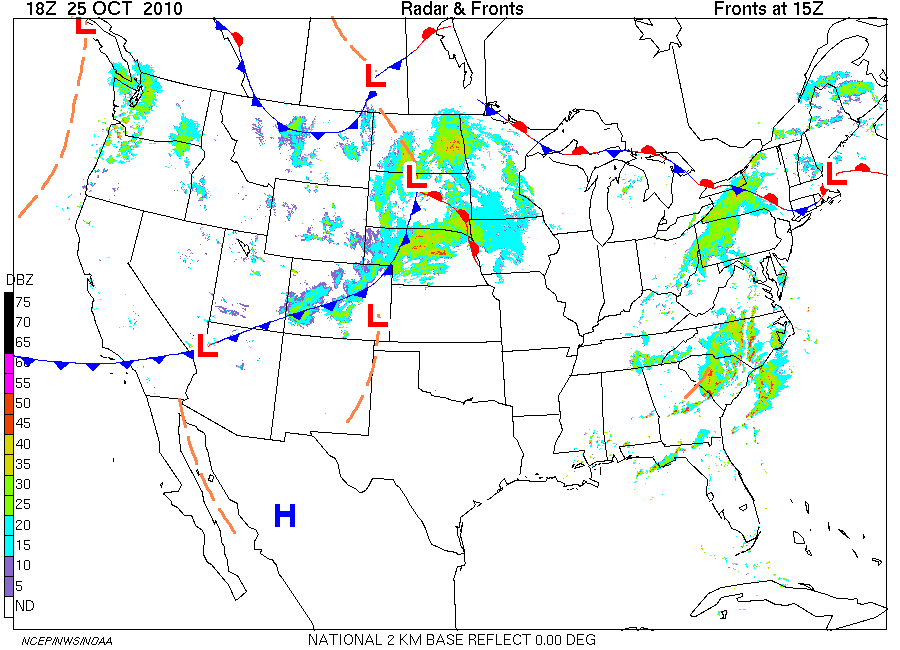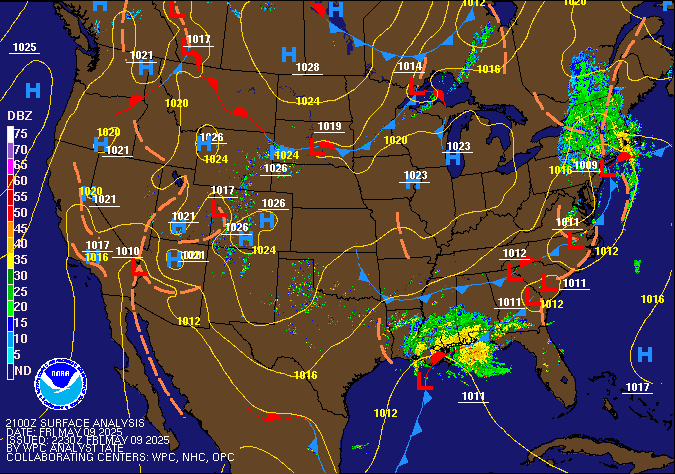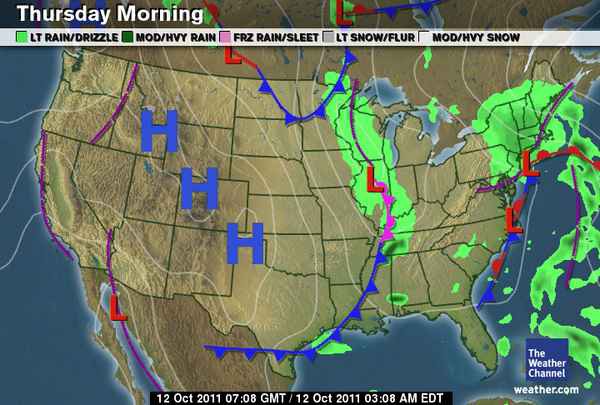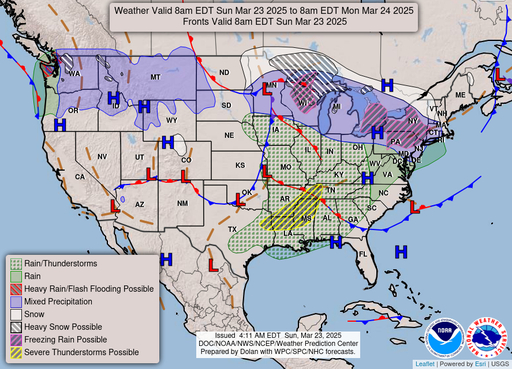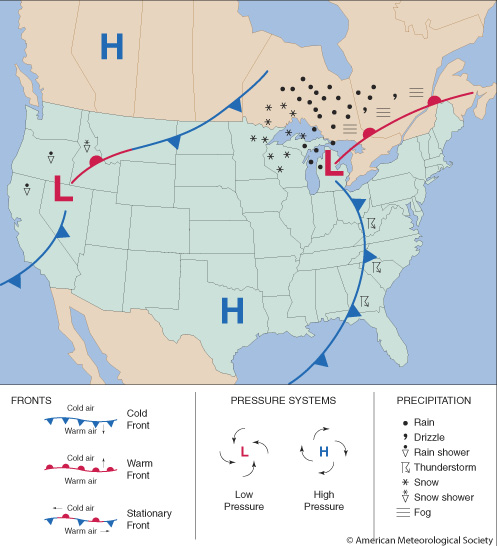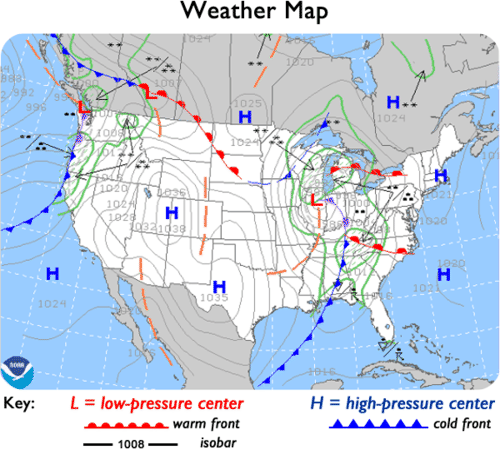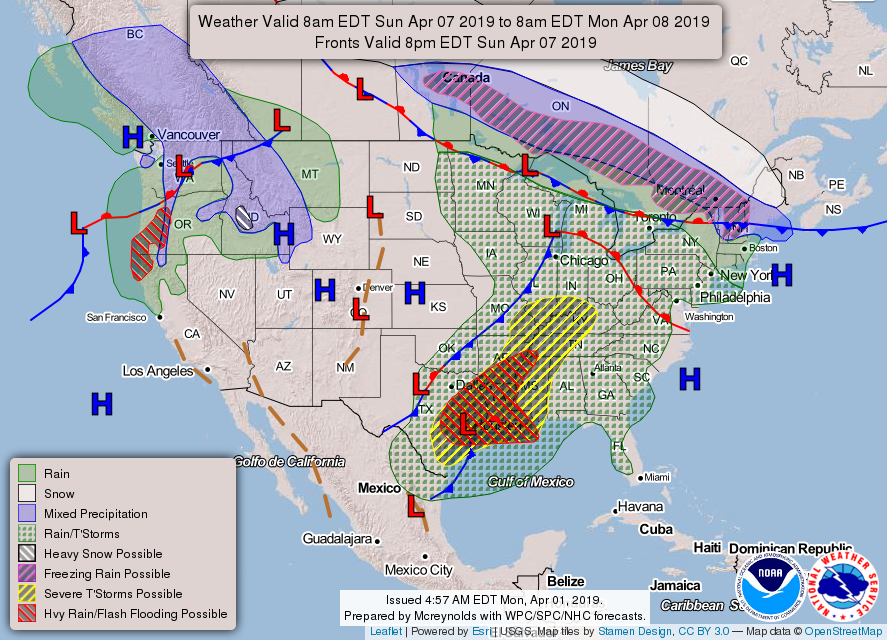Fronts On A Weather Map
:max_bytes(150000):strip_icc()/GettyImages-1178541757-49c93309e4824efcad8da27aa99cd620.jpg)
A front takes its name from two places.
Fronts on a weather map. Weather map interpretation learning goals 11c. To tell if it is a cold warm or stationary front is to look at a series or animation of maps and determine if the cold or warm air mass is advancing or neither. Weather in motion radar maps classic weather maps regional satellite. In surface weather analyses fronts are depicted using various colored triangles and half circles depending on the type of front.
Occluded fronts usually form around mature low pressure areas. Cold and warm fronts look similar on maps. Warm fronts usually move from southwest to northeast. Present weather maps that are created from current or recent past weather observations are called analysis maps.
A warm front can initially bring some rain followed by clear skies and warm temperatures. Severe alerts safety preparedness hurricane central. Utilize forecast maps and barometers to anticipate how future weather will affect your voyage. Isobars and fronts isobars are lines on a weather map joining together places of equal atmospheric pressure.
Top stories video slideshows climate news. Future weather maps produced by. A weather front is a boundary separating two masses of air of different densities and is the principal cause of meteorological phenomena outside the tropics. Weather maps summarize weather info on a geographic frame of reference.
Warm fronts are often coloured red. Recognize weather map features including highs lows fronts isobars and use them to infer winds clouds and bad weather. The presence of a warm front means that. On a weather map a warm front is usually drawn using a solid red line with half circles pointing in the direction of the cold air that will be replaced.
Known as the colorful lines that move across weather maps weather fronts are boundaries that separate air massesof different air temperatures and moisture content humidity. A flow of warmer air that overtakes and. Warm fronts are marked on weather maps with a red line of half circles pointing in the direction of travel and mark the edge of an advancing warm air mass. The semicircles can be thought of as half suns.
It is the literal front or leading edge of air that s moving into a region.
/imaginary-weather-map-of-the-united-states-of-america-859321066-5af09d0f0e23d90037d5c819.jpg)
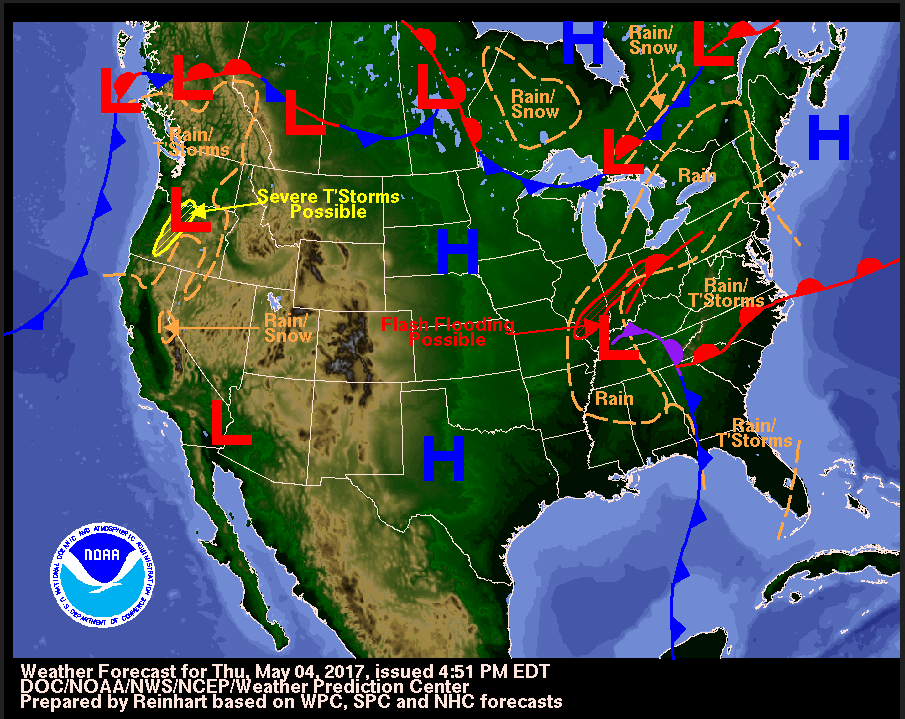
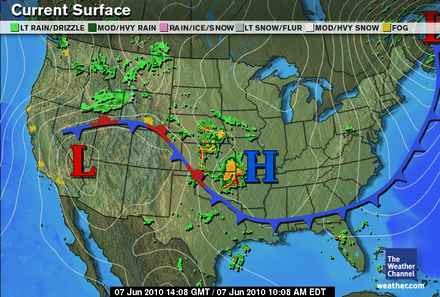


/imaginary-weather-map-of-the-united-states-of-america-859321066-5af09d0f0e23d90037d5c819.jpg)

